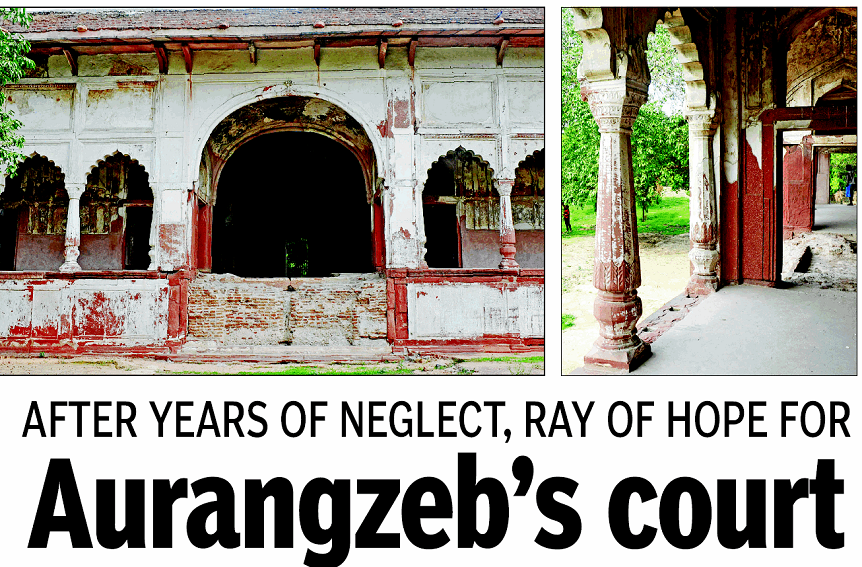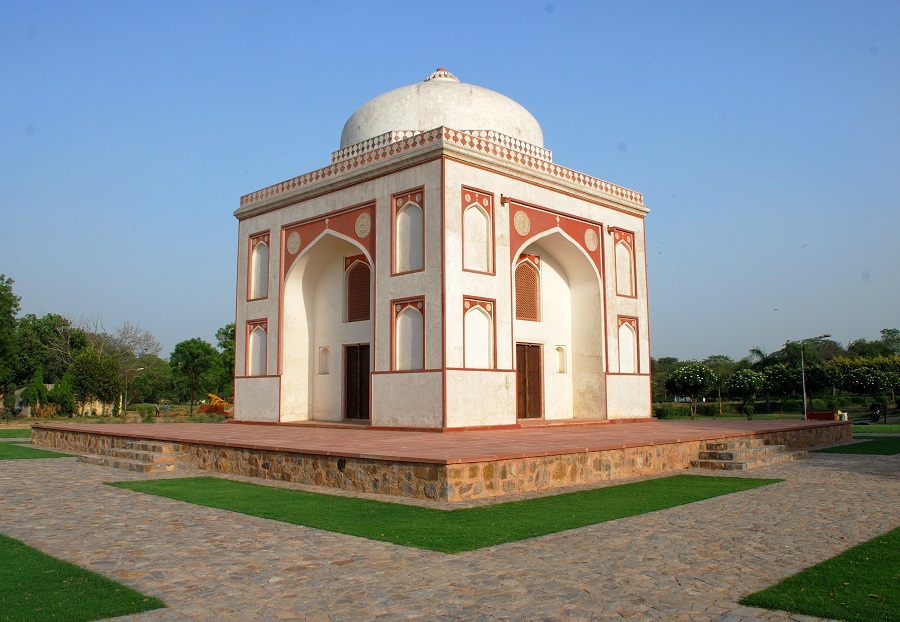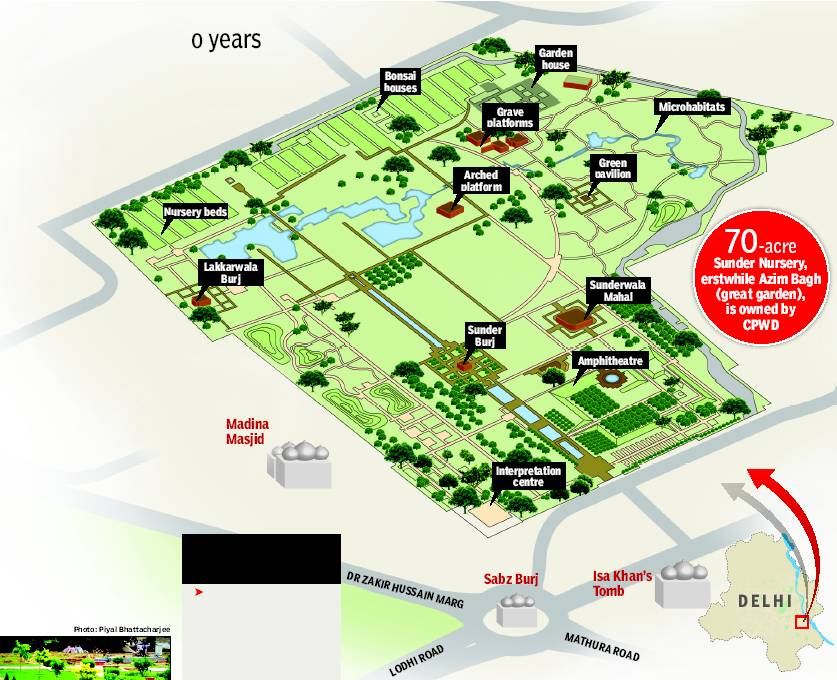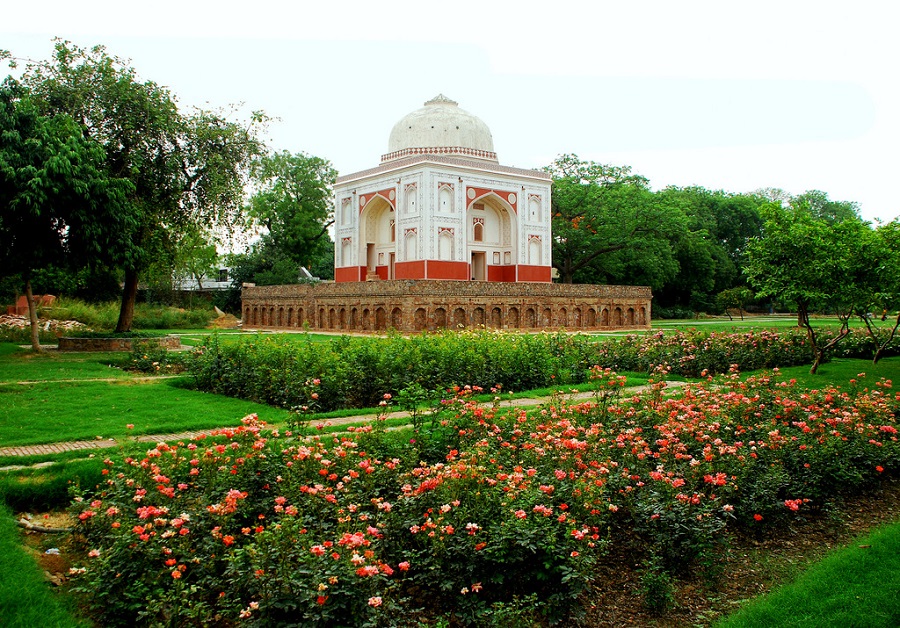Delhi: S
This is a collection of newspaper articles selected for the excellence of their content. |
Contents |
Shahpur Jat
The Times of India, Aug 22 2015
Dharvi Vaid
A village sets trend with style potpourri
Shahpur Jat, an urban village, has a swagger all its own. This stylish retail hub in south Delhi prides itself on its rural atmosphere that only accentuates the cutting edge fashion that it offers to discerning customers Colourful and quirky Shah pur Jat is anachronistic --in reverse. Its dirt lanes are boisterous and redo lent of rural India and yet this village in south Delhi has some of the most modern de signer ware on sale. Abutting the ruins of Alauddin Khilji's medieval Siri Fort Shahpur Jat once used to be an affordable production hub for rookie fashion designers. Today, it has transformed into a popular high-fashion retail area that melds the traditional with the modern. In the heart of the urban village is Jungi House, whose narrow lanes colourfully announce the presence of niche designer labels such as Liz Paul, Rahul and Anushka, Preeti Mohan, Bhumika Grover, Monika and Nidhi, Akshay Wadhwa and Rajat Suri. The wedding season can be a riot here, with lehangas, anarkalis and saris that have newness and flamboyance woven into them. And if it's a foreign look they are contemplating, there are stores like House of Blondie and Les Parisiennes to fulfil their fantasy. Men too can try out the array of fine wedding apparel here, from formals to innovative Indo-Western numbers whose prices can go up to Rs 50,000.
However, it is not only for wedding outfits that the style seekers congregate at this village. Designer Liz Paul says customers come hunting for traditional party wear too. “The best thing about Shahpur Jat is that in a single place you can get everything, and because most of the things on sale are designer pieces, they are unique too,“ she says.
An example of unique is the m e n swe a r at UNIT by Rajat Suri. The de signer has bor rowed the me tallic patterns that have been in vogue in women's fashion for some time and incorporated them rather boldly on solemn blazers and Nehru jackets. “Designers here excel in making boring office wear look stylish,“ quips Suri.
And then there are the jewellery shops. The bling in the showcases blend the old and the new, the tribal and the avant garde. No wonder, the chand balis and jhumkis, the kundan and the polki here are statements in themselves. What is more, if you want any particular piece customized, the stores are more than willing to ensure the glitter is uniquely yours.
“At Preeti Mohan's store you can even get your old watch customized into a beautiful ornament with gems of your liking,“ says Kanika Behl, who regularly shops at Shahpur Jat.“Whether you wear it with a maxi dress or an understated sari, it fits in as an exemplar of style.“ Walk around, and you will also find kitschy de signs incorporated into bedsheets, lampshades, cushion covers and wall hangings.
There is a tangible swagger about the place, perhaps because it is popular among budding designers who are just beginning to experiment with their labels. “Earlier designers only had small fabrication centres here,“ says Gau rav Jagtiani, who has had a produc tion unit in the village for seven years now, “but new designers have set up their retail stores here and are expanding the market.“
The restaurants in the village have joined in the fun with Bohe mian inspiration. “It is a place that is welcoming of all,“ says Sumit Singh, who opened Cafe Red with three other friends, all bankers. “We wanted a place where working people like us could just lounge and relax over a cup of coffee. Shahpur Jat topped our list because it has a very relaxing ambience.“ Like Cafe Red, there are many other theme restaurants that offer cuisines from India and across the world.
“The architecture and the gallies here give you the flavour of rural India,“ points out Jagtiani. “These elements are interpreted by the designers in their work.“ And that is what makes Shahpur Jat a village out of time.
Shalimar Bagh
Sheesh Mahal
The Times of India 2013/07/04
See the pictures and graphics
Shamnath Marg
Bungalow no. 33
Manash Gohain, The Times of India Jun 19 2015 DDC gets house where ministers fear to stay
The “unlucky bungalow“--33, Shamnath Marg--which no minister or bureaucrat has ever willfully opted for, was made the headquarters of Delhi Dialogue Commission (DDC).
The building, which had been the residence of the then CM Madan Lal Khurana before the Hawala scam forced him to demit his office, was refused by two other former CMs--Sahib Singh Verma and Sheila Dikshit--apparently due to Vaastu incompatibility .
However, a few like former power secretary Shakti Sinha consider this a great place to stay . He said he “would love to stay there gain“. Rejected by Congress and BJP for many years, AAP government, now finds this a perfect location for holding policy dialogue.
Considered a jinxed location by many , the bungalow was the official residence of the chief minister of Delhi till 19 years ago. Built on a 2,000sq ft plot, the bungalow has been there since the Raj era. The first CM (1952) of Delhi, Chaudhary Brahm Prakash, had lived here for a brief period. However, things didn't “go well“ and he could not complete his term as CM.
Thereafter, the bungalow remained vacant for a long time. In 1993, the building was the residence of former CM Khurana. This was followed by a series of rejections with politicians including Dikshit and many bureaucrats turning it down who considered the house “inauspicious“.
Sunder Nursery
RETURN OF THE MUGHAL
Sunder Nursery was a Mughal garden once, and will be again in
Richi Verma | TNN
The Times of India 2013/08/31
The Sunderwala Burj, sleeps undisturbed behind the tall gates of Sunder Nursery just across the road. Few know the nursery as anything more than a seedbed for the trees and flowers in Lutyens’ Delhi, but that is set to change soon.
Quietly, the sprawling property is being transformed into an authentic Mughal garden laid around a central axis with monuments, fountains, water bodies and a large variety of tree and bird species. The project’s landscape planner, Mohammed Shaheer, says the aim is to conserve the environment and create a “major landscaped space” aligning nature and utility in a garden.
The Aga Khan Trust for Culture (AKTC), is partnering Archaeological Survey of India and the site owner, Central Public Works Department, in the project
The project was conceived while AKTC was restoring the gardens of Humayun’s Tomb during 1997-2003. When they are completed in 2015, the Sunder Nursery gardens will cover 100 acres across the nursery and the adjoining Batashewala complex. Shaheer says the gardens will have a microhabitat zone for plants found on Delhi’s ridge, river banks, plains and other zones.
Edged by nine mounds, the microhabitat zone will replicate Delhi’s original landscape to increase environmental awareness among the 3 lakh schoolchildren who visit Humayun’s Tomb every year. AKTC has recorded 1,800 mature trees of more than 200 species at the nursery on a geographic information system (GIS) and planted another 100-odd species. “Biodiversity studies in 2012 documented 54 species of resident birds and 24 species of butterflies,’’ said an official.
Besides the Sunderwala Burj, the nursery also has eight early-Mughal era monuments that have been restored after years of neglect. Three of them—Sunderwala Burj, Lakkarwala Burj and Sunderwala Mahal—have been declared monuments of national importance by the ASI. However, other structures, including ancient wells, a Mughal pavilion, a mosque and several graveyards are unprotected but equally striking. Two monuments in the adjunct Bateshewala complex are also with ASI.
For the complex as a whole, the changes mark a return to past glory. Before the British turned it into a nursery in 1913, it was called Azim Bagh. “Historically, the entire area from Humayun’s Tomb to Millennium Park (along the Yamuna) was a Mughal garden,” says Ashok Khurana, retired director general of CPWD in whose tenure the project was conceived.
AKTC has offered to manage Sunder Nursery until it becomes financially sustainable. “Discussions for postproject management of the park are now in an advanced state with AKTC underwriting all management and maintenance costs for 10 years,’’ said Ratish Nanda, project director of AKTC. Already, parallels are being drawn between the gardens and New York’s iconic Central Park.






